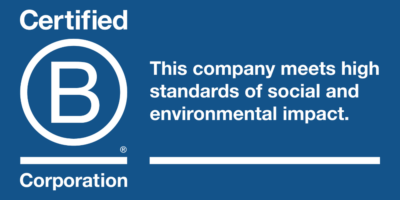Small-cap stocks outperformed most major asset classes this quarter—such a rare event we can hardly remember the last time it happened! Interestingly, the majority of this performance occurred during a brief five-day trading window in early July, when small-caps surged 12%.
That spike is significant, because it highlights how far small-caps had fallen behind and how quickly they can bounce back when market conditions align.
Perhaps the trillion-dollar “Magnificent 7” giants (NVIDIA, Apple, Microsoft, Meta, Amazon, Tesla, and Alphabet) can’t grow their market values indefinitely. In fact, some of these mega-cap stocks now boast market capitalizations larger than the entire Russell 2000.
For perspective, imagine if a mere 10% of the Mag 7’s combined market cap (over $15 trillion) were reallocated into the Russell 2000 (~$2T combined market cap). It would send small-caps soaring over 75%! While we don’t expect this scenario will actually happen, it underscores the potential upside for small-caps when the market finally wakes up to their undervaluation.
Macro Overview: Fertile Ground for Small-Cap Stockpickers
As active, quality-focused small-cap investors, we find the current macroeconomic landscape to be quite favorable. Real interest rates are positive, the economy (measured by GDP) is growing at a steady pace, and the Federal Reserve remains accommodative.
Though, we have to admit, the Fed’s recent decision to cut rates by 50 basis points outside of a recession, financial crisis, or steep market sell-off is a bit unprecedented. Our best guess is that they’re more worried about employment than inflation right now.
After all, the Sahm Rule, which tracks unemployment trends, was a hot topic this quarter as the unemployment rate ticked up by more than 0.5%—a key indicator preceding recessions. And let’s not forget, the yield curve had been inverted for some time, and the Fed’s track record for engineering soft landings is less than stellar.
While we consider macro factors, we give far more consideration to identifying and tracking the idiosyncratic factors that drive individual stocks. If a macro theme influences small-caps, it’s often a derivative of a broader trend, or a “picks-and-shovel” play supporting that theme.
Take, for instance, Levi Strauss & Co (LEVI). When Levi Strauss moved to California during the 1850 gold rush, he didn’t actually mine for gold. Instead, he opened a dry goods store – and the rest is history. The iconic blue jeans idea came from his customer Jacob Davis, who patented the idea for riveted pants in 1873, well after the gold rush ended in 1855. Nevertheless, Levi Strauss & Co. still went on to thrive as a long-term beneficiary of that macro trend.
Tapping Into Emerging Small-Cap Themes
Artificial Intelligence (AI) euphoria has gripped the market, and we’ve discussed it in prior letters. While there are few small-caps directly involved in AI, we believe many companies will ultimately benefit from AI—just as all companies today benefit from the internet.
One area we are focused on is power demand. Data centers running all those AI models require significant electricity, currently consuming 2.5% of all U.S. electricity – a figure projected to surge to 7.5% over the next five years.
Tech giants and hyper-scalers, such as Microsoft and Amazon, are keenly aware of AI’s energy demands and are prioritizing clean, reliable power sources like nuclear energy. Microsoft recently signed a contract to bring a Three Mile Island reactor back online, and Amazon purchased a nuclear-powered data center earlier this year.
We’ve long championed nuclear energy as the cleanest, safest, and most reliable power source. And over the past few years, we’ve scoured the small-cap universe to find companies that can capitalize on the nuclear renaissance. Our strategies include direct or indirect exposure to nuclear energy through utilities, power transmission and distribution, uranium enrichment, and uranium production.
We foresee a long runway for domestic uranium enrichment, as the U.S. still relies heavily on Russia for a significant portion of its enriched uranium to power our grid. In our view, this represents one of the most critical vulnerabilities in our nation’s energy infrastructure—relying on an adversary to keep the lights on is a risk that needs addressing. Domestic uranium enrichment represents a critical opportunity that small-caps are well-positioned to exploit.
Election Outlook
We don’t expect the outcome of the 2024 elections to have a substantial impact on small-caps, regardless of who wins the White House. Our portfolios aren’t positioned based on a specific candidate’s victory.
That said, we are actually hoping for a divided government, as that scenario has historically delivered the best market returns. (For more on the markets and elections, click here). Above all, we simply hope for a peaceful and civil transition of power.
As we head into the holiday season, we’ll continue scouring the small-cap landscape for the next generation of Levi Strauss-like companies – businesses poised to thrive as indirect beneficiaries of macro trends. We remain laser-focused on unearthing the long-term opportunities that can drive sustainable returns for our clients.
Wishing everyone the best for the upcoming quarter.
The Riverwater Small Cap Team
Disclosures: The information contained within this update represents the opinion of Riverwater Partners and should not be construed as personalized or individualized investment advice. Reader should not assume that investments in the securities identified were or will be profitable. Timing differences of purchases and sales may have a modest impact on the actual contribution numbers presented. The holdings identified do not represent all the securities purchased, sold, or recommended. The calculation’s methodology along with details on all holding’s contribution to the overall account’s performance during the measurement period are available upon request. Past performance does not guarantee future results.









